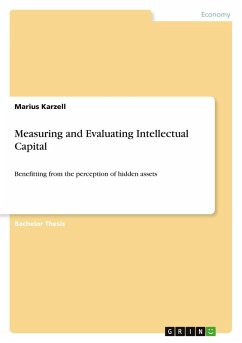Master's Thesis from the year 2009 in the subject Leadership and Human Resource Management - Miscellaneous, grade: 1,3, University of Göttingen, language: English, abstract: Since the past half century we observe a growing importance of Intellectual Property (IP) which is often associated with a shift towards a knowledge-based economy. In knowledgebased economies, IP protection and management have become the highly important element for business success. Intellectual Property is everywhere: it is embedded in daily-needs products, high-tech equipment, technology, as well organizational routines. Having become crucial in modern world, Intellectual Property and knowledge capital, more than physical capital, drive economies of different countries. About 70% of business assets today are intangibles.1 Not less important for economy are small and middle-sized enterprises (SMEs). This strategic sector covers the whole spectrum of economic fields and is a very important contributor to sustainable economic development. Representing over 90% of all business establishments and about half or more of GDP and export shares SME sector is often associated with a 'backbone' of most national economies.2 Intellectual Property is increasingly regarded as a valuable resource for individuals, firms and nations, and as a source of competitive advantage.3 Nowadays, companies are exploiting IP rights not only for protection and security of return purposes; they increasingly use them due to strategic reasons. Numerous studies and literatures4 recognized SMEs as an important contributor to innovation. However, there is still a little understanding of how SMEs manage their IP. Existing studies have focused mainly on large firms and, particularly, on patenting activity, and there are still few attempts to bridge all three together: SMEs, Intellectual Property and IP management. The aim of this paper is an analysis of SME's performance in innovation and the state of SMEs in IP system. For this reason two main questions were formulated: 'How do SMEs manage their IP?' and 'Are SMEs really disadvantaged by their size in the use of IP rights?' In order to answer the first question, the following aspects were examined: a way of usage different protection methods by SMEs, the reasons why they apply for IP protection and what obstacles SMEs may face in their exploitation of IP system.
Hinweis: Dieser Artikel kann nur an eine deutsche Lieferadresse ausgeliefert werden.
Hinweis: Dieser Artikel kann nur an eine deutsche Lieferadresse ausgeliefert werden.








